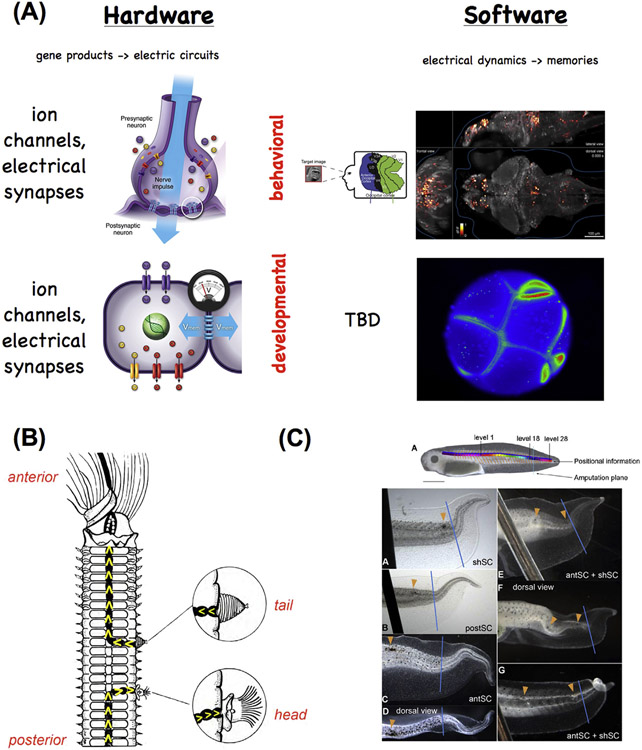Fig. 2.
Mechanisms and functionality conserved between brain function and pattern regulation.
(A) The hardware of the brain consists of ion channels that regulate electrical activity and highly tunable synapses that propagate electrical and neurotransmitter-mediated signals across a network. This hardware supports a wide range of electrical dynamics that implement memory and goal-seeking behavior (and are not directly encoded by the genome, and can be modified by experience, although they have default modes of inborn activity corresponding to instincts). Other (non-neural) cell types have exactly the same ion channel, electrical synapse (gap junction), and neurotransmitter machinery. They likewise support a kind of control software, implemented in time-varying electrochemical dynamics across tissues, which underlies patterning decisions. In both cases, techniques from the field of “neural decoding” can be used to extract embedded semantics (cognitive content in the case of the brain, anatomical prepatterns in the case of tissues) from bioelectrical state readings. The computational analogy is not meant to suggest that tissues (or the brain) operate specifically via the Von Neumann architecture used by today’s computers. Interestingly, the CNS provides important input into pattern regulation. When a nerve cord is cut and deviated to the side wall of worms (B), the direction of the nerve end specifies whether a tail or head anatomical structure is produced (Kiortsis and Moraitou, 1965). In tadpole tail regeneration (C), laser-induced damage created within the spinal cord produces distinct changes to the shape of the regenerating tail depending on the number and location of the pinpoint holes (Mondia et al., 2011). Left panels of (A) drawn by Jeremy Guay. Top right panel of (A) is reproduced with permission from (Naselaris et al., 2009). Bottom right panel of (A) is a frame from a time-lapse movie produced by Dany S. Adams. Panel B is modified after (Kiortsis and Moraitou, 1965). Panel C is reproduced with permission from (Mondia et al., 2011).

